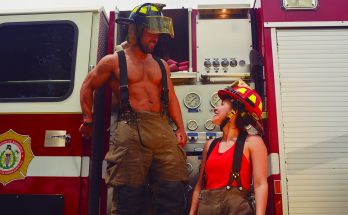By Francisco Peyret
In Part I we pointed out how the phenomenon of gentrification has modified the functioning of San Miguel; how traditional neighborhoods such as Guadalupe and San Antonio are composing themselves to live a new reality that is impacted by the arrival of more and more tourists and new residents; how the original inhabitants are mixing with the new inhabitants and are shaping a new functionality for these neighborhoods. And not only in these neighborhoods is this process happening there are many cases where the settlers are organizing themselves to generate conditions that provide them with a social environment that assures them security, wellbeing, economy, services, and a pleasant urban environment.
The historical, cultural, urban, and social characteristics have made San Miguel a pole of attraction for investors and families to come to our community. This has generated an important urban and economic pressure—gentrification causes displacement of the original inhabitants and increases in the price of goods and services, but it is a very complicated phenomenon to stop so local authorities and residents are now responsible for assimilating this process in the best possible way. For this reason, it is essential to clearly define the areas or districts with particular characteristics in order to promote the potential of each one of them.
When cities are declared World Heritage, the first thing that happens is that they become very attractive targets for investment and tourists, which is why UNESCO always recommends that urban policies be focused on preserving traditions and architectural and housing characteristics. Many cities have suffered the irreversible process of tertiarization which implies that businesses displace the inhabitants of these historic centers in their entirety. For UNESCO it is essential that heritage areas be preserved as «living centers.»
Gentrification can be a process that can be used to improve the functioning of the city’s neighborhoods, generating a better social and economic fabric, as long as we do not go overboard with changes in land use. There are many examples in popular neighborhoods and neighborhoods of the city, but the question we all ask ourselves is what is happening with new developments—how are they being thought in this context of population and urban growth.
One of the areas that is very interesting for the community is what is now known as Distrito Corazón which is being developed around Parque Zeferino. Talking with one of the promoters of the project, he told us in detail what this development consists of. It is a family affair that started when the grandfather bought this land, and the little house of the Hacienda de Mexiquito was converted into a church (1956), a little school, and an orphanage which he finally donated to the Dominican Sisters of Mary O.P. Today it is what we know as the Guadalupan Home Sanctuary (Mexiquito).
Years later, the grandchildren conceived the project for the whole area but as compensation to obtain the authorizations the first step they took was the donation of the land and the construction of the Zeferino Park (20,000 square meters), with an investment of about 250,000,000 pesos (park plus infrastructure). The project is intended to become a development pole for visitors, but also for the local community. The district will have service areas, two hotels—one already under construction (Pueblo Bonito), and another belonging to the One chain (Luxury Version), in addition to the construction of residential homes. The project includes a promenade connected to Zeferino Park with bicycle lanes and pedestrian corridors which also includes a public plaza (Plaza Corazón) for cultural and social events.
According to the developer, the project is open so that families living in the upper part of this area (San Luis Rey and Santa Cecilia) are connected to the urban functioning and infrastructure of the Corazon District. At the same time, around the traffic circle in the lower part of the Sanctuary of Mexiquito, they are planning to develop a cultural center. Arteria is a project that will include 13 workshops and stays for young artists who want to create and exhibit their work at the same time.
For the future of San Miguel it is very important to know how investors are thinking about developing their projects. Environmental care, provision of services, and integration into the social fabric are determining factors for the preservation of cultural heritage both tangible and intangible. It is clear that as citizens we need more information and the responsibility to seek ways to participate more and more in the processes of planning and defining municipal urban development.




